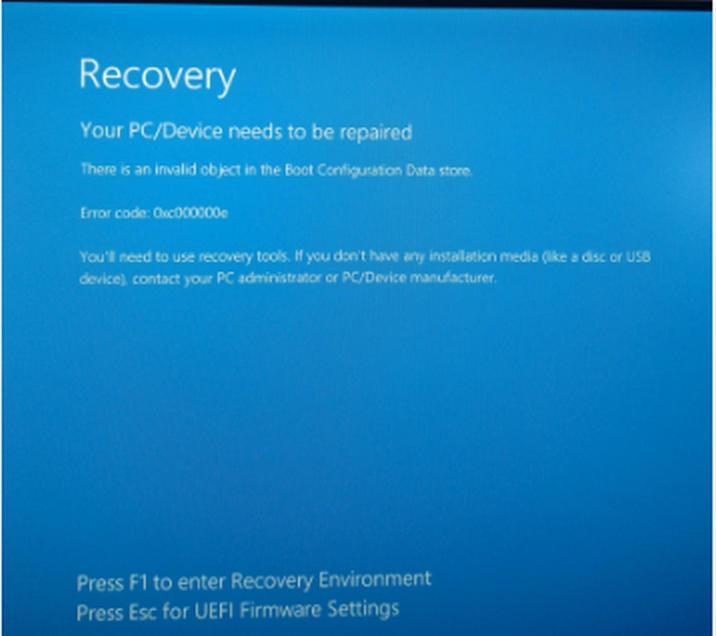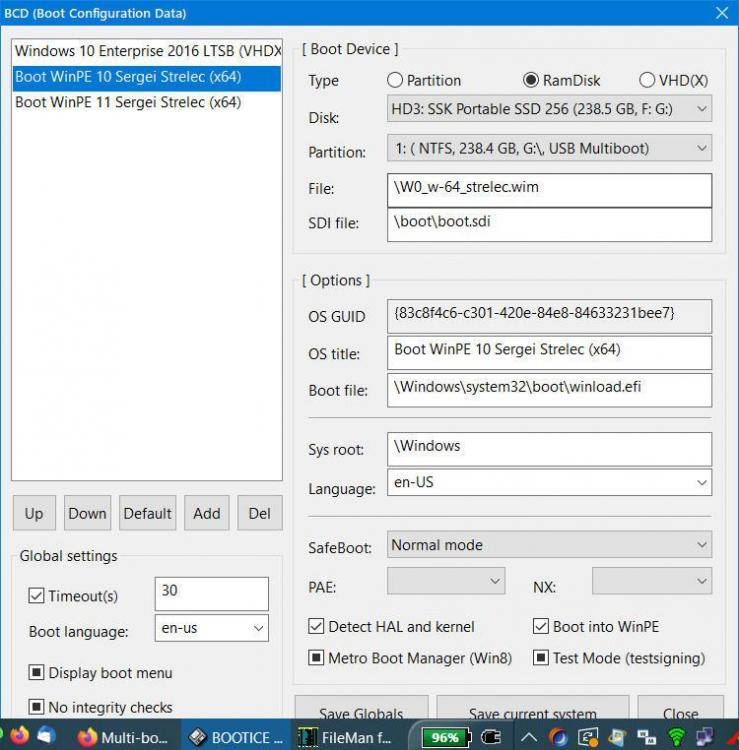About click-click

Profile Information
-
OS
Windows 7 x86
Recent Profile Visitors
4,442 profile views
click-click's Achievements
8
Reputation
-
No idea. I encountered the problem clean installing 26100.1 It's been turned off here ever since.
-
It's called Smart App Control and can be turned off in Defender or registry (0=Off 1=On 2=evaluation). Another half-baked attempt by Ms to tighten security that only gets in the way. https://support.microsoft.com/en-us/windows/smart-app-control-frequently-asked-questions-285ea03d-fa88-4d56-882e-6698afdb7003
-
I noticed SAB has a lot of duplicate icons in the tray icons config section. Sometimes three sometimes 2. They may or may not be checkmarked. The icons are visible only once on the taskbar. I'm using a quicklaunch folder on the taskbar if that matters. Running with SAB 3.9.5
-
@JFX or whoever knows I have and EFI partition that does not show a drive letter. For -syspart:{X} can I use -syspart:HDD-0:1 to get WinntSetup to update the EFI BCD there? i.e. d:\ThinApps\WinNTSetup\WinNTSetup_x64.exe NT6 -sysPart:HDD-0:1 -tempDrive:Z: -sysLetter:-C: -bcd:EFI -silent -setup Also, I can't remember why I used -sysLetter:-C: Should it not be -sysLetter:C:
-
I had Classic context menus enabled and this also worked for all desktop objects such as This PC . I recently inadvertantly unchecked this item in Make it top notch. I re-enabled it, but now all desktop items still show the new context menu instead of the classic one. All other items not on the desktop show the classic menu after it was re-enabed. How do I also get back classic context menu for the items on the desktop? I'm at 3.8.13 and using Windows 11 Pro 22631.4460 or Windows 11 LTSC 26100.2314 Edit: I'm not sure if StartAllBack ever supported the issue describe above, but I may have applied the following reg file previuosly, which got undone by unchecking the Startallback Context menu option. reg.exe add "HKCU\Software\Classes\CLSID\{86ca1aa0-34aa-4e8b-a509-50c905bae2a2}\InprocServer32" /f /ve The above command brings back the Classic contect menu for the Desktop items too.
-
Will a single license allow it to be used with different Windows systems on a multi-boot PC? My understanding is that the license is tied to the hardware, so if I use a multi-boot setup, the license will cover more than one StartAllBack install on that PC. Is that correct?
-
Did you not read my post above? CSM support for both with priority Legacy 1st and UEFI last. I tried a few things such as renaming the EFI directory as EFI_ and that is the only way up to now to make it use the BIOS boot BCD. As soon as I rename it back to EFI, it reverts to UEFI for the boot. The only other difference between the 2 flash drives is 128GB vs 256GB. The other thing I did was to restore the 100MB partition from the working 128GB flash to the other flash and that crashes. If I let WinNTSetup update the BCDs, the crash issue is resolved, but it still defaults to booting EFI
-
@JFX or anyone with and idea. I have 2 usb SSD flash drives that are set up to boot either BIOS or UEFI. Both have 2 partitons and the layout is 100MB FAT and the other NTFS for VHDs and wim files. I have a laptop that has CSM support and allows both BIOS and UEFI booting. The priority is Legacy first and UEFI 2nd. One flash works as it should and uses the BIOS boot BCD when booting. The other drive for some reason always ends up using the EFI BCD. I must have done something to that flash that causes this, but I don't know what. Both BIOS and EFI BCDs are pretty much identical on both flash drives. Any idea what's causing the boot process to use EFI instead of BIOS for that flash?
-
I don't know. Never tried it. I doubt it can be used for vhds
-
If the EFI BCD is configured correctly in the ESR partition, I don't see why the VHDs shouldn't boot. Unless you're doing this on different HW that require other drivers not installed in your VHDs. I don't know anything about svbus. If you mean the RamDisk option as an entry in the BCD, that is what I select to boot wim files.
-
VHDs only is not a problem. Same setup as what I did with the .wim files. Configure the bcd to point to the HD and partition with the VHDs. You can convert BIOS (MBR) drive to GPT (Windows Disk Manager), but the data on it needs to be deleted so make sure to backup the disk before doing the conversion. I only need UEFI for my new hardware. I won't be doing any conversions on my current disks.
-
From what I've been able to determine, all that is needed for UEFI is a 100MB FAT ESP partition to hold the the BIOS (if needed) and the UEFI system files used by the boot process. A recovery partition and an MSR partition aren't really needed. GPT also replaces MBR on that drive, but other drives can still be MBR. The windows BootMgr still works with a correctly configured BCD. I did a small test with the following layout: Hd1 (GPT), 100MB FAT ESP and 100GB NTFS with Strelec 10/11 wim files. Bootmgr lists both and both will boot. I will create a 3rd partition and use WinntSetup to install an OS there and see what happens. If what I've said is incorrect, please let me know what.
-
I am planning on getting a new laptop that that will only have the UEFI BIOS. It will be bare-bones without any OS with 2 SSDs. I understand a new partition layout will be required, but that's about all I know about UEFI. I've been living too long in the past. Previously, I would create and format an NTFS partition and apply my customized wim with WinNTSetup. What kind of partition layout do I need now before using WinNTSetup and will windows bootmanger still show a list of systems for multi-booting?
-
My win 8.1 vhd on the internal hdd has BootDriverFlags set to 0., but still boots fine from there. I checked the other hdd vhds and they look okay. I wiil need to check this when deploying a new VHD on an external drive to be sure it has the correct value. I always hold by breath when booting a new VHD







